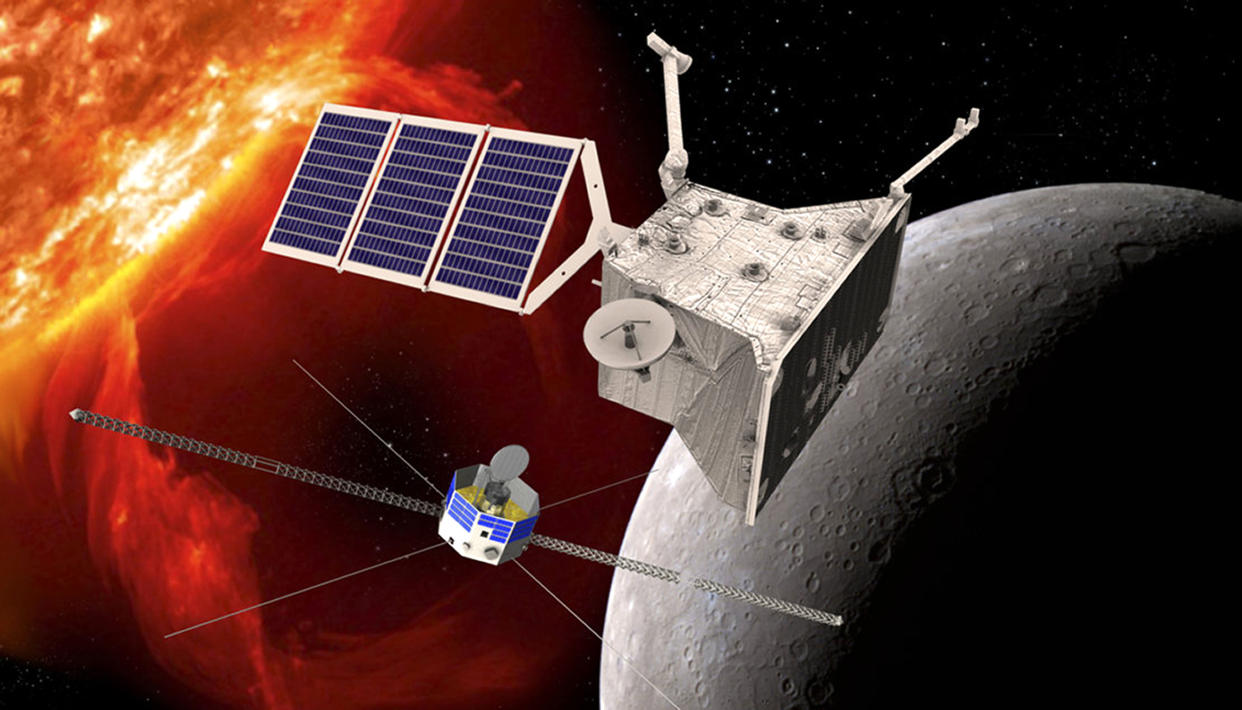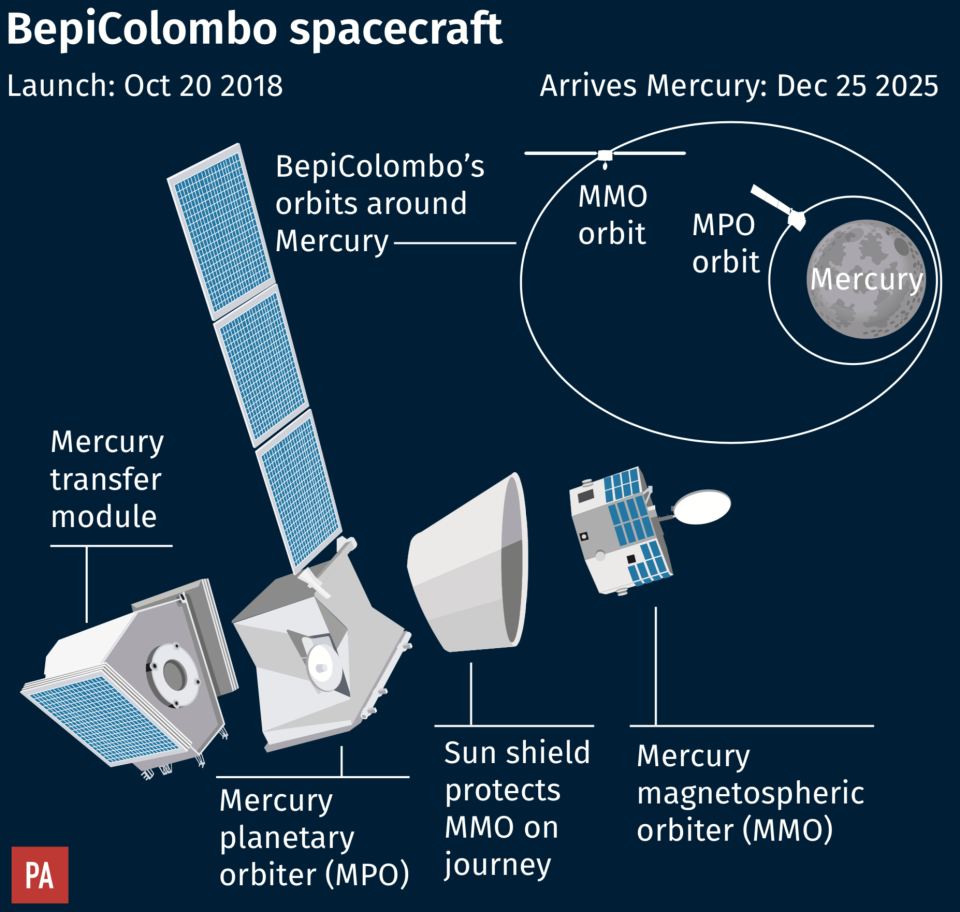British-built spacecraft ready for blast-off on seven year mission to Mercury

Final preparations are under way for the launch of a British-built spacecraft that will travel five billion miles to Mercury, the planet closest to the sun.
BepiColombo is due to blast off from the European spaceport at Kourou, French Guiana, at 2.45am UK time on Saturday October 20.
The four-tonne craft will be carried into space by a heavy lift Ariane 5, the European Space Agency’s most powerful rocket.
It will then immediately begin a complex journey that will take seven years.

At its destination, BepiColumbo will deploy two orbiters, one European and the other Japanese, to circle the planet for up to two years.
Scientists hope to unravel some of Mercury’s mysteries, such as the reason for its oversized iron core, its spectacular volcanic vents, and the possible existence of water ice in shadowy parts of its blazing hot surface.
The answers they get from the £1.4 billion mission are expected to shed new light on the origins and evolution of the solar system.
The spacecraft is fitted with futurist ion plasma engines, designed and built in the UK, which emit beams of electrically charged xenon gas.
READ MORE FROM YAHOO NEWS UK:
Three people killed after caravan is towed the wrong way down a busy motorway
One of Britain’s most prolific paedophiles has ‘excessive’ sentence cut by seven years
Muslims are the target of 52% of religious hate crime in England and Wales, police figures reveal
Boris Johnson’s popularity slumps to its lowest ever level, poll finds
The worst British railway stations for delays have been revealed
BepiColumbo will reach a top speed of 60 kilometres (37 miles) per second.
The European Space Agency’s Mercury Planet Orbiter (MPO), which will survey the planet’s surface and probe its chemistry, was built by satellite company Airbus Defence and Space in Stevenage.
Airbus also constructed the power unit carrying the orbiters, the Mercury Transfer Module (MTM), in the UK. The ion thrusters were supplied by British defence technology company QinetiQ.
One of the European orbiter’s 11 instruments, the Mercury Imaging X-ray Spectrometer (Mixs) was designed and built at the University of Leicester.
Dr Graham Turnock, chief executive of the UK Space Agency, said: ‘UK scientists, engineers and technicians have played a vital role in developing BepiColombo and the incredibly sophisticated set of scientific instruments on board.’
Only two spacecraft have previously visited Mercury. Nasa’s Mariner 10 flew past the planet three times in 1974-75 and the American space agency’s Messenger probe orbited Mercury from 2011 to 2015, taking photos of the surface.

 Yahoo News
Yahoo News 

